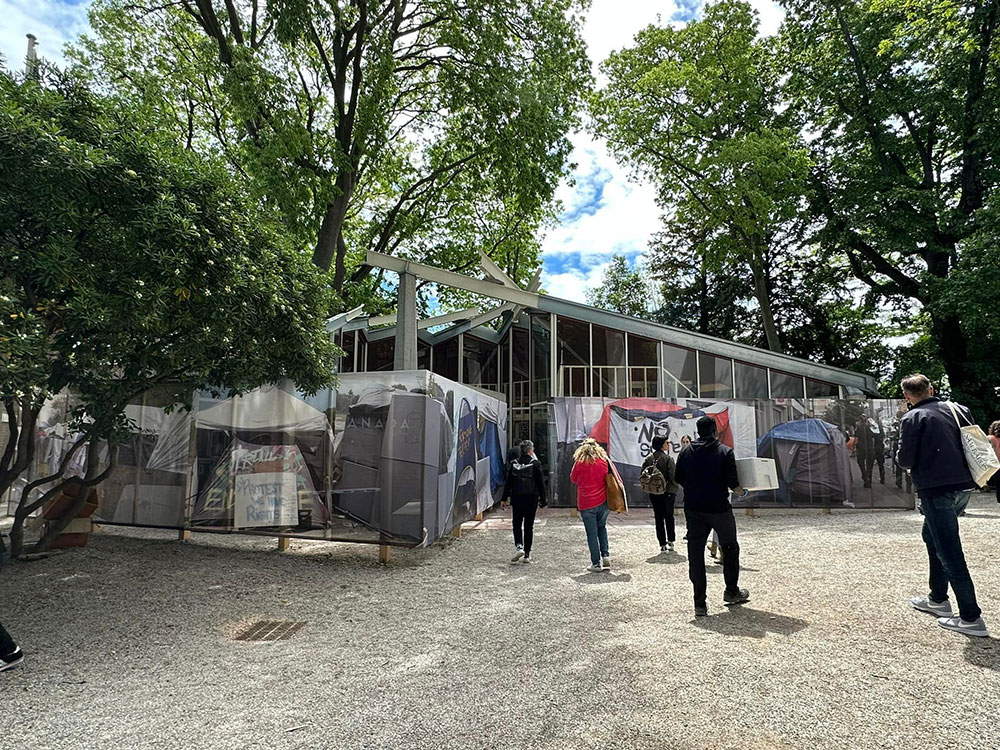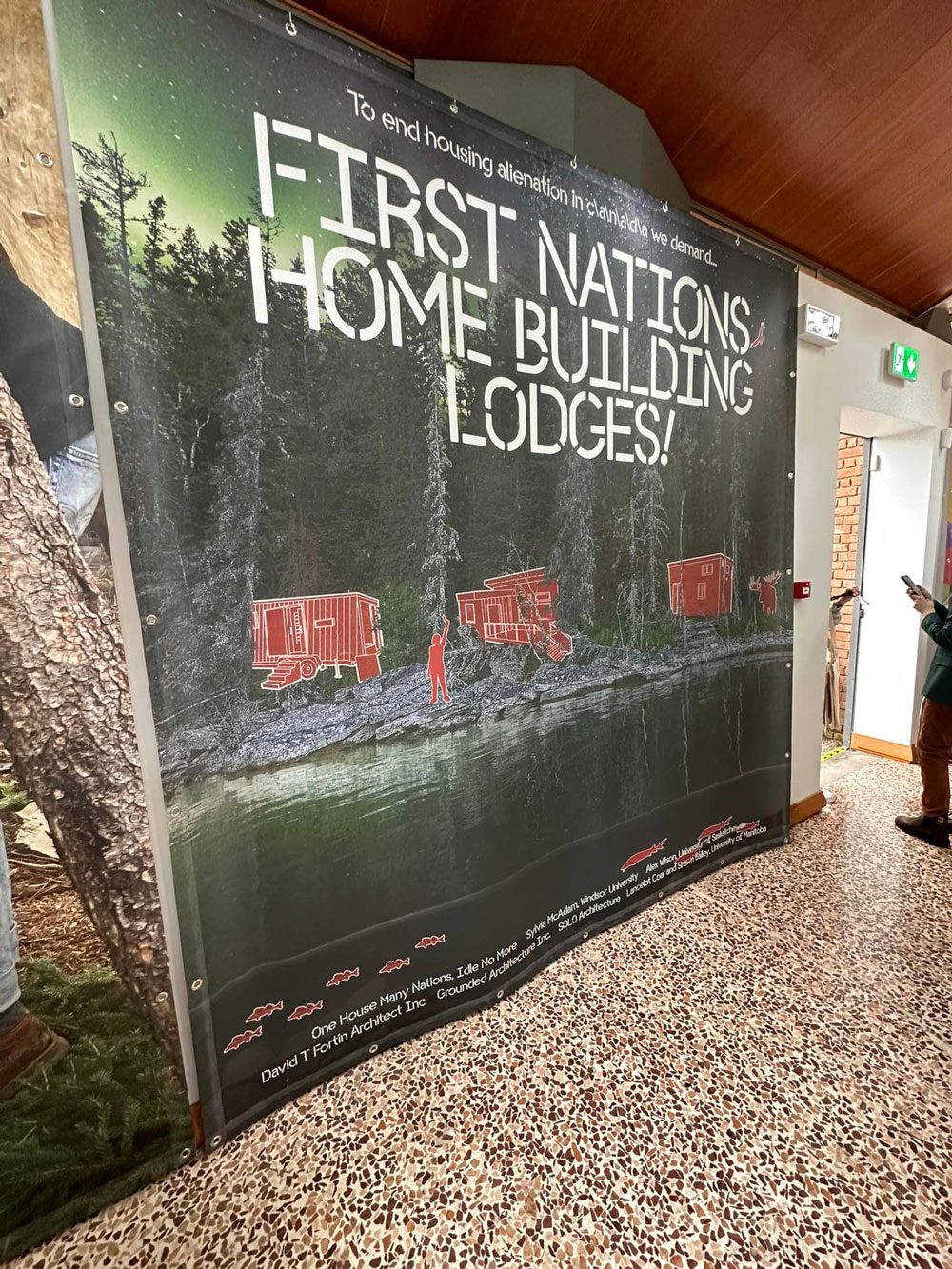
Dr. Alex Wilson collaborates on the Canadian exhibit for the 2023 Venice Biennale’s International Architecture Exhibition
Not for Sale! Pavilion puts the spotlight on housing alienation in Canada at the most prestigious architecture showcase in the world

Opening on May 20, 2023 and running for six months, the Venice Biennale International Architecture Exhibition consists of a central exhibition with over 100 international participants, 60 national pavilions and collateral events throughout the city.
The Canadian exhibit is called Architects Against Housing Alienation Not for Sale! and draws attention to the housing crisis being experienced by many communities across Canada. Not for Sale! describes and denounces the impact of real estate speculation that converts homes into financial assets, aggravating a range of issues including a general lack of affordability, precarious housing, and homelessness.
Dr. Alex Wilson (EdD), professor in the Department of Educational Foundations in USask’s College of Education, worked for the past year as part of a larger collective of architects, activists and advocates designing the exhibit and contributing to a larger campaign focused on sustainable solutions to housing affordability, highlighted through ten demands.
The Canadian pavilion was designed by Italian architects in 1958 and is considered iconic for its Italian modernist design. This year, the outside of the pavilion was altered to reflect the theme of the exhibit.
“The front of [the design] is wrapped in a graphic that is a tent city from Vancouver. So before you even enter [the exhibit], you're faced with the reality of housing alienation in Canada,” said Wilson in an interview with Marcy Markusa, host of CBC Manitoba’s Information Radio.
The exhibit’s ten demands include First Nations housing with community involvement, intentional communities for unhoused people, mutual aid housing, and prioritizing forms of cooperative over speculative real estate development. The demands are reflected in ten areas of the exhibit.
“It’s quite beautiful. There are posters and there’s also educational information and videos that people can watch and listen to as well,” shared Wilson with Markusa.
“I hope that when people come through, it's not just an intellectual exercise. [I hope] that they have an emotional response and connection so that they realize that, you know, [the] housing issue isn't just about commodifying land, and resources and people, but rather there’s almost a spiritual element to what's happening, when we disconnect people from their homelands,” continued Wilson.
For her contribution to the exhibit, Wilson collaborated with lawyer and Idle No More activist Sylvia McAdam from Windsor University, architect David T. Fortin, and advocates Lancelot Coar and Shawn Bailey from the University of Manitoba, to outline sustainable solutions to home building on First Nations. The demand they developed focused on Home Building Design Lodges ‘tied to housing manufacturing facilities on reserves to build capacity within community by grounding the production of housing and their components in community values, language and education’.
Fortin shared with Azure Magazine how the team’s contribution to the Architects Against Housing Alienation exhibit provides solutions to address the commercialization of housing on First Nations reserves.
“Our focus is on how the Indian Act has propagated the manufacturing of houses that commercializes it as product,” Fortin explained to Azure. “Reserves are forced to buy from outside sources because they’re underfunded and they have huge shortages – and the only way to get out of that is to buy cheap housing from whoever you can get it. That usually means off-reserve housing manufacturers; and so, the money that comes to the reserve for housing leaves the reserve to go to others.”
The solution was inspired by Wilson’s One House Many Nations organization which is a community-first approach to address home-building on First Nations in ways that prioritize traditional wisdom and sustainability. The organization has worked with partners to envision and build small homes through community-led Indigenous design that envisions housing as a process of enabling and empowering people. To date, the organization has built small homes for Opaskwayak Cree Nation and Big River First Nation in partnership with community and working with youth.
This month, One House Many Nations is delivering additional homes to youth in Big River First Nation. The homes were designed by the youth that will be living in them and built by students in the Nutana Industry and Career Education program at Nutana Collegiate in Saskatoon.
The Venice Biennale International Architecture Exhibition runs through November 26, 2023.


Media stories featuring Architects Against Housing Alienation:
Together, we will work towards Truth and Reconciliation. We invite you to join by supporting Indigenous achievement at USask.

